Fizzy and refreshing, this simple fermented lemonade is full of fresh-squeezed lemon juice, a small amount of sugar, and plenty of natural probiotics for gut health. This is a great option for a delicious, healthy, classic drink on a hot summer day.
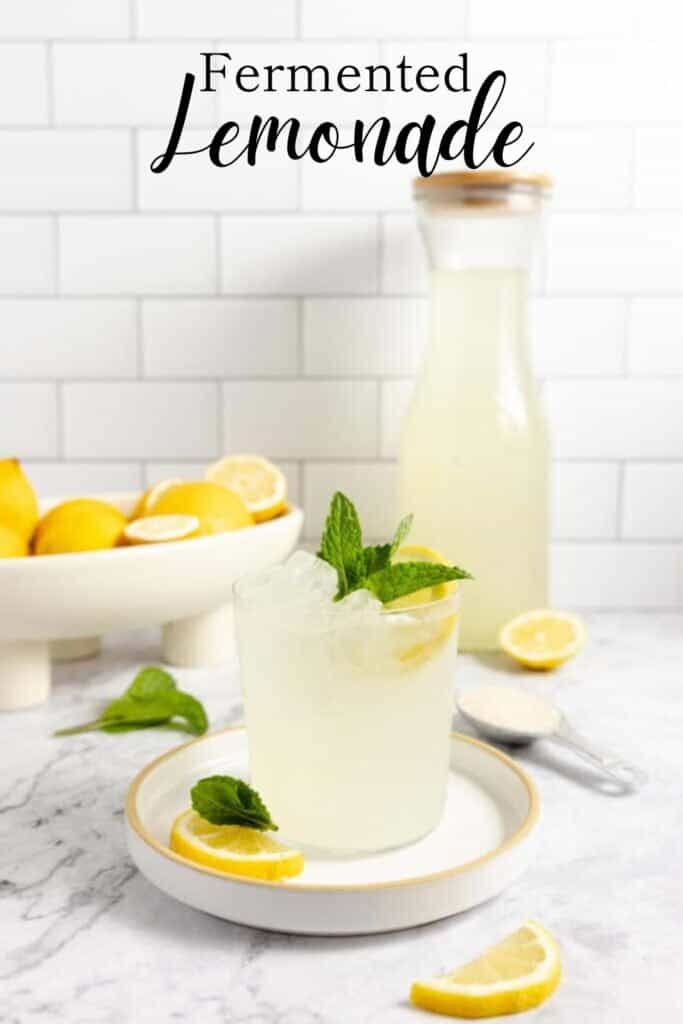
Table of Contents
Lemonade typically only appears in the summer, though it has a strong history as the standard fare of Sunday school snacktime and childhood birthday parties.
And kids love lemonade.
But the lemonade found in the grocery store is often saturated with sugar, as well as added natural flavors intended to intensify the lemon. It just ends up being too sweet, and I can’t justify all the sugar.
So then there’s homemade lemonade, which has such a nostalgic taste and tends to be more mildly flavored and less sweet than store-bought lemonade.
The kids also love this, particularly when they get to help make it. What’s more fun than squeezing lemons?
So taking homemade lemonade even a step further… let’s ferment it!
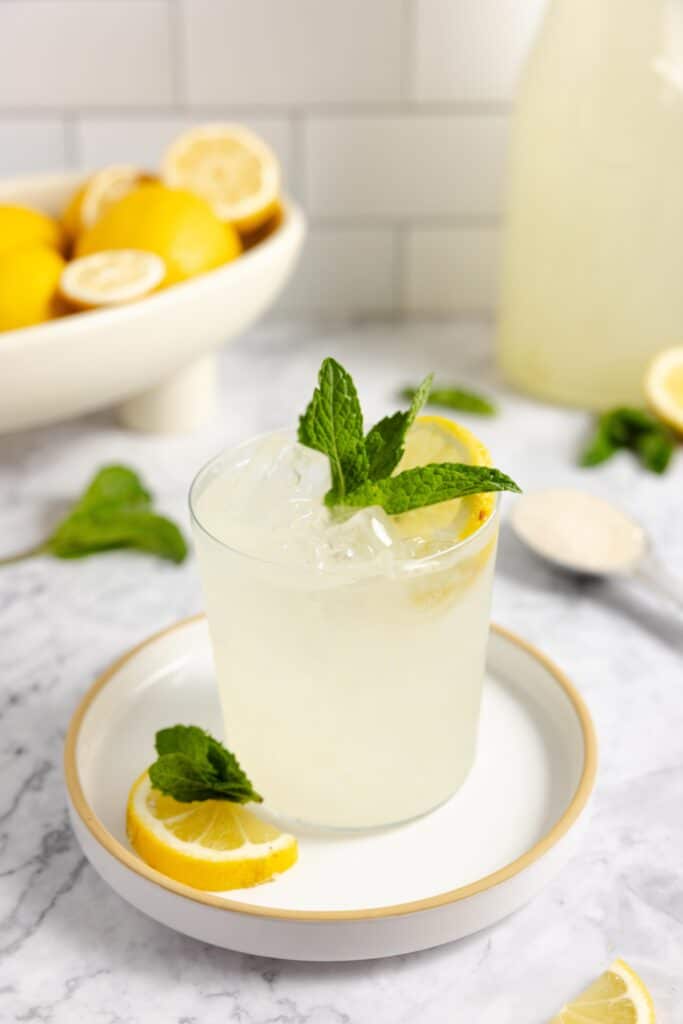
What is Lacto-Fermentation?
Lacto-fermentation is a simple process of providing fermentation time and allowing the natural lactic acid bacteria or lactobacillus acidophilus present in the water and fruit juices to begin metabolizing the sugar carbohydrates.
These friendly bacteria work to reduce the overall sugar content and produce natural carbonation with tiny bubbles of carbon dioxide.
With the added benefit of probiotics, this fizzy drink now has the potential to help balance and improve gut health, aid digestion, and boost your immune system naturally.
Lacto-fermented lemonade is healthy, tastes great, and occurs naturally with the right combination of time and ingredients.
Now we have the perfect summer beverage.
This post contains affiliate links, which means I make a small commission at no extra cost to you. See my full disclosure here.
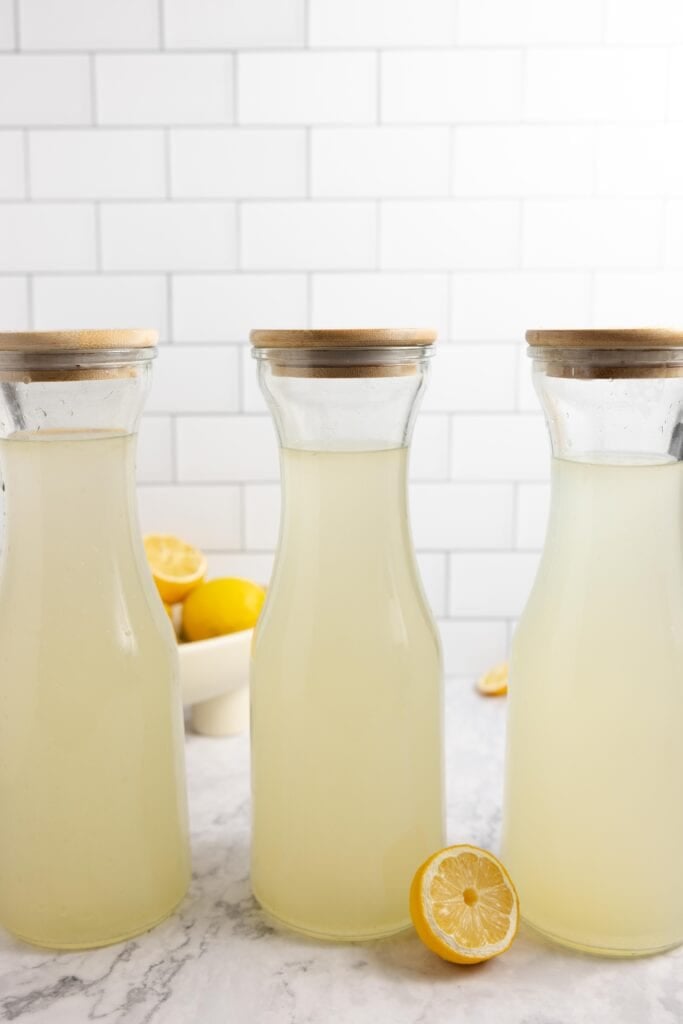
Why You’ll Love Fermented Lemonade
It’s good for you: It’s already low in sugar, but the good bacteria present in the fermentation process metabolize the sugar further, contributing gut-healthy probiotics in exchange. Fresh lemons are also full of vitamin C and antioxidants, supporting your immune system. It’s an overall excellent way to hydrate!
It’s delicious: It’s a fizzy lemonade — refreshing, light, and just the right amount of sweet. Plus, it’s delicious over ice!
It’s simple: The messiest part of the process may be collecting the whey, and after that, squeezing the lemons. But once those tasks are done, combine the ingredients, stir, and it’s hands-off until you pour your first glass.
Tips for Making Fermented Lemonade
- Fresh lemon juice is key! Bottled lemon juice is not as bright or sweet, and it’s been sitting for a long time with additives to make it shelf-stable which can affect fermentation.
- Filtered water is best in any case. The chlorine and other chemicals present in tap water can impact fermentation and flavor.
- A lemon squeezer is a helpful tool. Juicing the lemons by hand can be easier if you first roll the lemons on the countertop to soften them.
- Open the lid of your lemonade jar once daily to release the pressure, then pop it back on.
- The longer it ferments, even in the fridge, the stronger the developed flavor will be and the more carbonated it will become.
- If your kitchen is naturally warm, your lemonade will ferment more quickly and may be ready in just a couple of days. Lemonade ferments more slowly in a cooler environment.
- I’ve heard swing-top jars or flip-top bottles make the fizziest finished product. Plus, they’re so pretty!
What is Whey? Is it Necessary?
Whey is the liquid leftover from the curdled yogurt. Often it is settled at the top of yogurt, and I’ve heard of people pouring this off.
Did you know you can stir it right back in? It contains plenty of good nutrients and protein! For this recipe, we’ll use the whey from strained yogurt as the starter culture to start the fermentation.
Now, we’ve all found a child’s cup of juice that’s been hidden away for a couple of weeks — the contents are sour, strong-smelling, possibly moldy, and overall gross. This is what happens when juice or lemonade is unintentionally fermented. It’s a very, very different result from delicious probiotic drinks.
Intentional fermentation with a starter culture, such as whey, is tasty, safe, healthy, and refreshing.
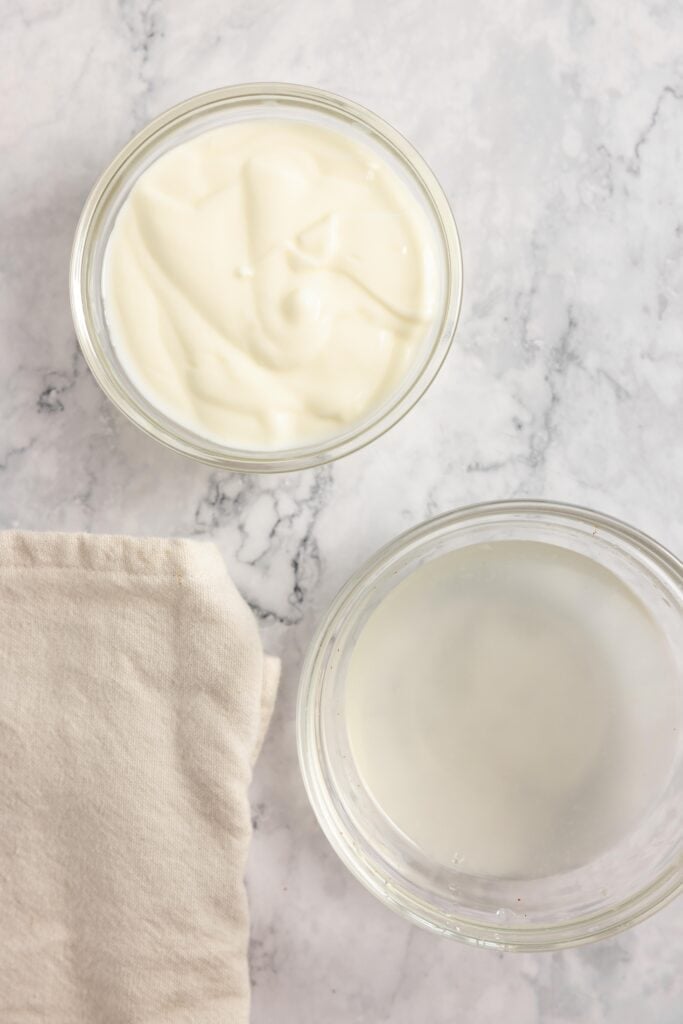
Collecting Whey from Yogurt
Whey can be collected from a plain, full-fat yogurt. Not Greek yogurt, as this has already been strained and will have very little whey to offer.
Start with a high-quality homemade or store-bought yogurt. Here is an easy recipe for homemade yogurt in the instant pot.
While there are different ways for straining the whey, I find the simplest method to be using a mesh strainer lined with a tea towel, cheesecloth, nut milk bag, or even a coffee filter. If you make your own yogurt, you’ll likely already have a yogurt strainer perfect for this!
Place your strainer over a large bowl, add the yogurt to the strainer, and allow to strain into the bowl for several hours.
You can set this in your refrigerator and strain it overnight, if needed.
The cloudy to clear liquid collected in the bowl is fresh whey. Depending on the type of yogurt, you may have a layer of yogurt solids that settle at the bottom. Some of this is so runny, it finds its way through the strainer.
Just collect the clear whey for this recipe, and you can even add the solids back into your yogurt.
Whey is full of protein, vitamins, and minerals, and tastes refreshing on its own. Whey can also be used as a replacement for buttermilk in many recipes, or even take the place of water in some bakes.
The remaining yogurt will be thick, and at this stage is referred to as Greek yogurt. It’s rich in protein and has a luxurious texture.
The whey you’ve collected will be used as the starter culture in your fermented lemonade as it is full of probiotics.
Tools You May Need
Tea towel, cheesecloth, etc.
Large bowl
Gallon-size glass jar & lid
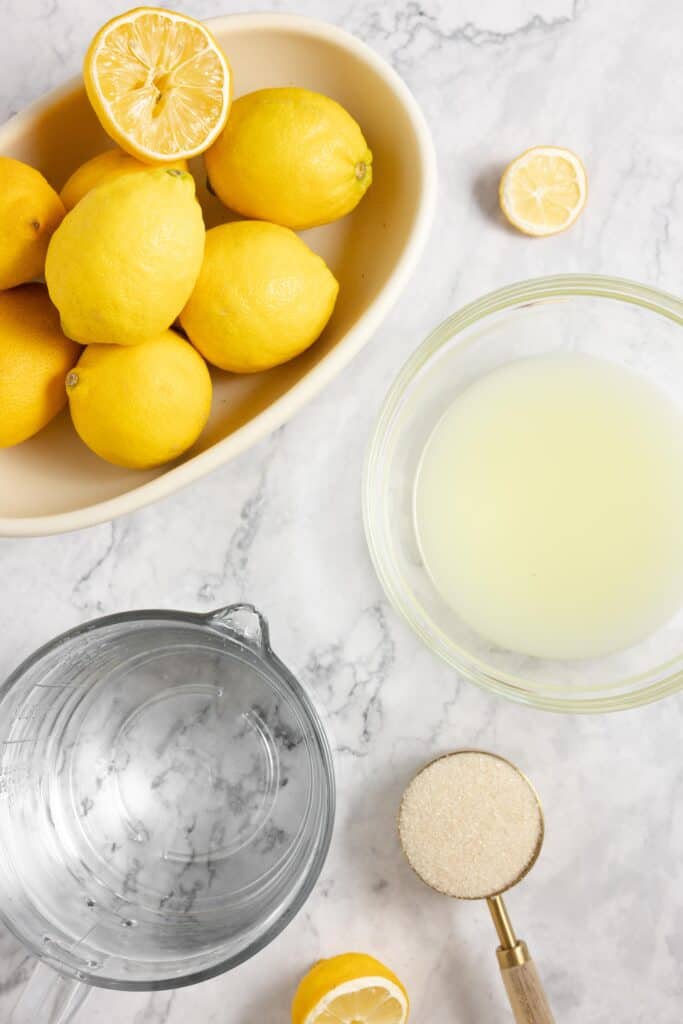
Ingredients
Cane sugar – Some people have used brown sugar for a different flavor. Cane sugar seems to give the best fermentation results over honey and maple syrup.
Lemon juice – Using freshly squeezed lemon juice is the best way to enjoy this drink. You’ll have far better flavor and the health benefits of fresh lemons.
Whey – Strained from a full-fat plain yogurt. Instructions are above.
Water – Filtered water is always best.
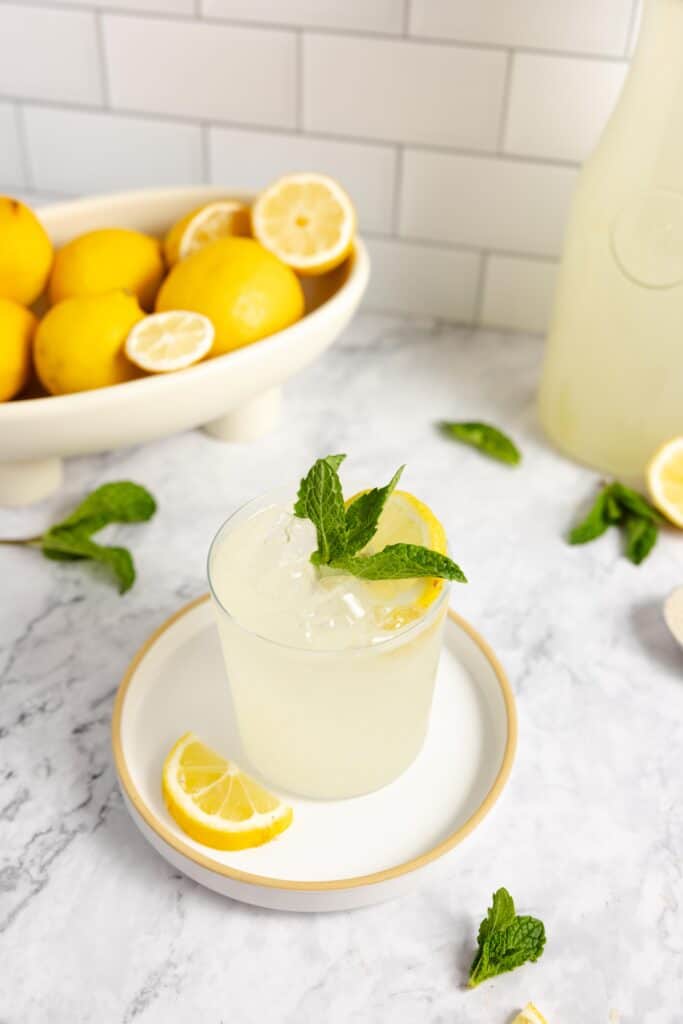
How to Make Fermented Lemonade
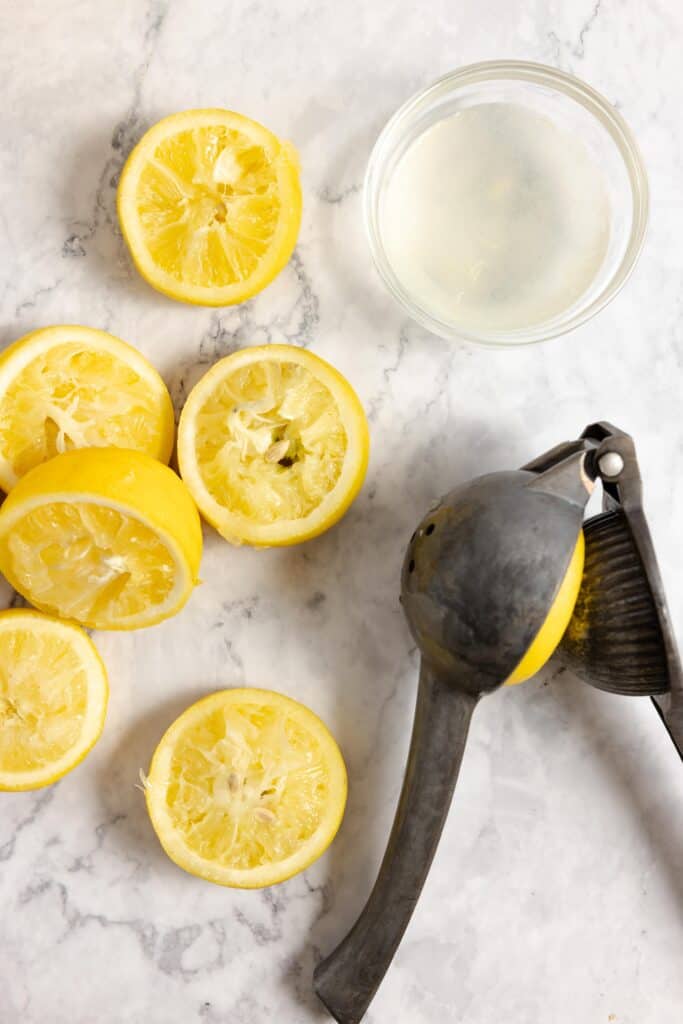
Combine the sugar, lemon juice, whey, and filtered water into a glass jar or jug. I used a gallon-sized jar.
Stir thoroughly until the sugar is mostly dissolved.
Seal the jar with a tight lid and keep it at room temperature for 72 hours. You can keep it on your counter or a pantry shelf – whatever works!
You may want to release the pressure on your jar each day by loosening the lid briefly.
After 72 hours, the lemonade should be bubbly. The longer it ferments, the more carbonated it will be.
Store your lemonade in a sealed container in the refrigerator. Serve cold from the fridge or over ice and enjoy!
Storage
Keep in the refrigerator in a sealed container for up to two weeks. Release the pressure every now and then.
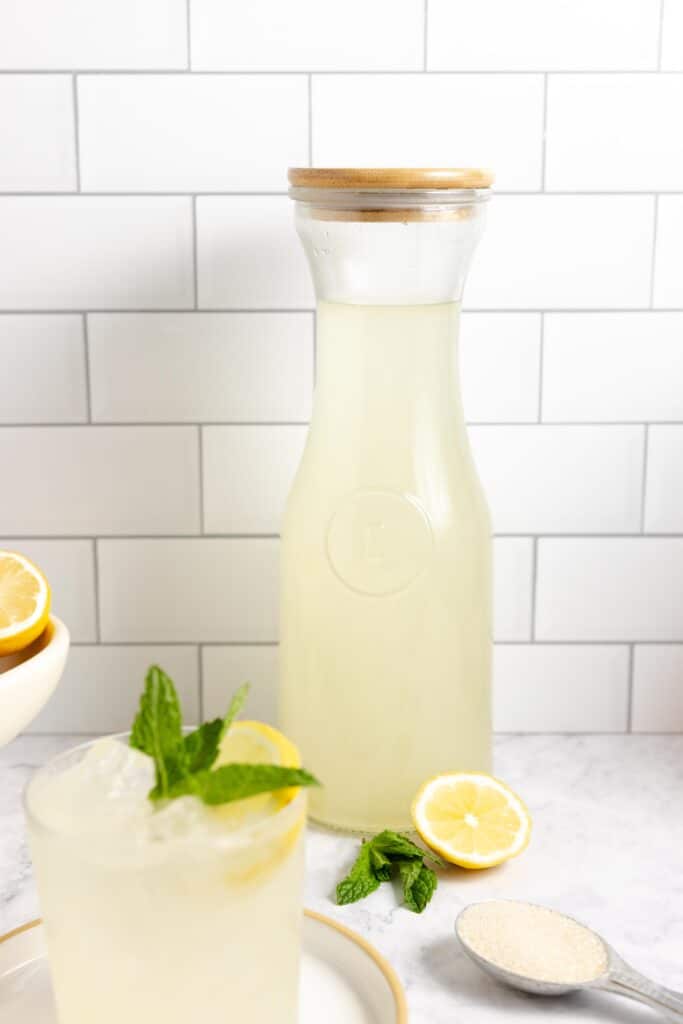
FAQ
On the countertop, lemonade will ferment in 2-4 days. Once in the fridge, it will continue to ferment, though much more slowly.
The main benefit is the probiotic nature of fermented lemonade. Probiotics are beneficial bacteria that balance and promote gut health and digestion, as well as boosting immunity.
Fermented lemonade can be made with a ginger bug, which is a starter specifically made for fermenting drinks. If you already maintain water kefir, you can also make fermented lemonade by combining the fresh lemon juice with water kefir, allowing for additional fermentation time, if desired.
Self-Paced Online Course
Simple Sourdough
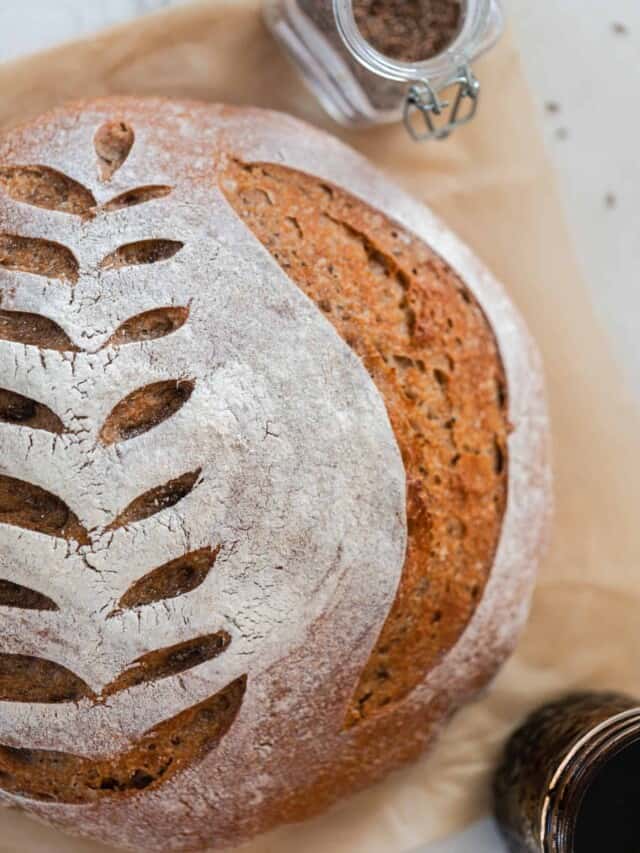
What’s in this course?
- Make your own robust starter
- Bake your first loaves of sourdough bread
- Understand sourdough better
- Expand your sourdough bread repertoire
- Download my Complete Recipe Book
More fermented recipes at Farmhouse on Boone:
- Lacto Fermented Salsa
- Homemade Fermented Ketchup
- Lacto Fermented Pickles
- Lacto Fermented Garlic
- Fermented Beets
If you try this recipe and love it, I would love if you could come back and give it 5 stars! Tag me on Instagram @farmhouseonboone
Fermented Lemonade

Ingredients
- ⅓ cup cane sugar
- ¾ cup lemon juice, freshly squeezed
- ½ cup whey, strained from full-fat plain yogurt
- 8 cups filtered water
Instructions
- Combine the sugar, lemon juice, whey, and filtered water into a glass jar or jug. I used a gallon-sized jar.
- Stir thoroughly until the sugar is mostly dissolved.
- Seal the jar with a tight lid and keep it at room temperature for 72 hours. You can keep it on your counter or a pantry shelf – whatever works!
- You may want to release the pressure on your jar each day by loosening the lid briefly.
- After 72 hours, the lemonade should be bubbly. The longer it ferments, the more carbonated it will be.
- Store your lemonade in a sealed container in the refrigerator. Serve cold from the fridge or over ice and enjoy!
Notes
- Fresh lemon juice is key! Bottled lemon juice is not as bright or sweet, and it’s been sitting for a long time with additives to make it shelf-stable which can affect fermentation.
- Filtered water is best in any case. The chlorine and other chemicals present in tap water can impact fermentation and flavor.
- Open the lid of your lemonade jar once daily to release the pressure, then pop it back on.
- The longer it ferments, even in the fridge, the stronger the developed flavor will be and the more carbonated it will become.
- If your kitchen is naturally warm, your lemonade will ferment more quickly and may be ready in just a couple of days. Lemonade ferments more slowly in a cooler environment.
- Swing-top jars or flip-top bottles make the fizziest finished product. Plus, they’re so pretty!
Nutrition
Nutrition information is automatically calculated, so should only be used as an approximation.

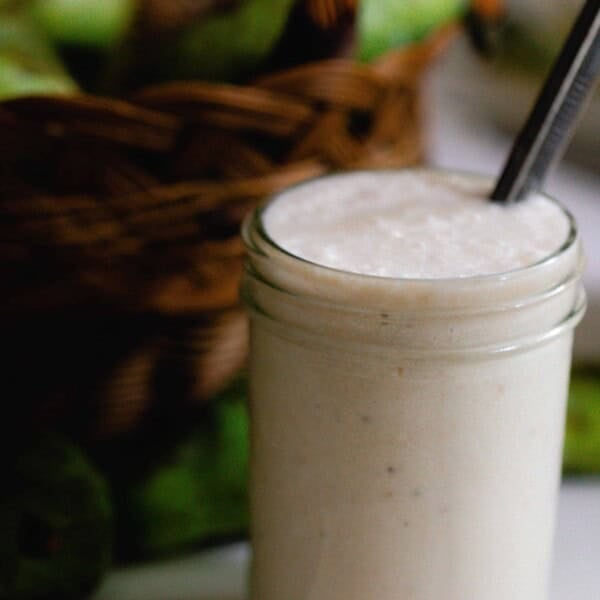
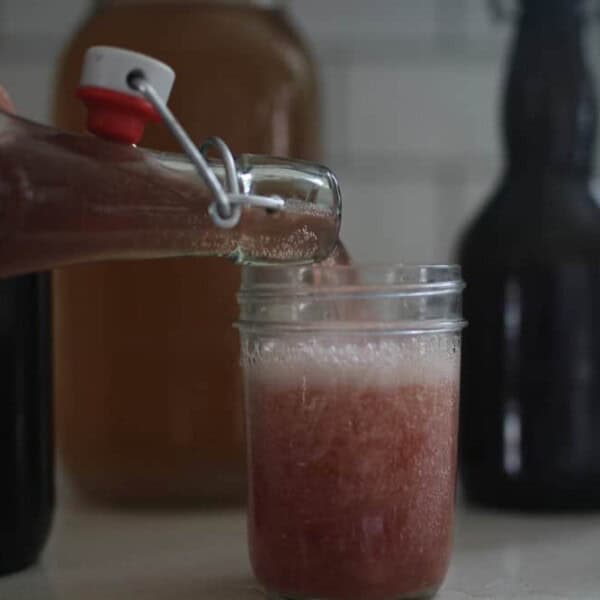
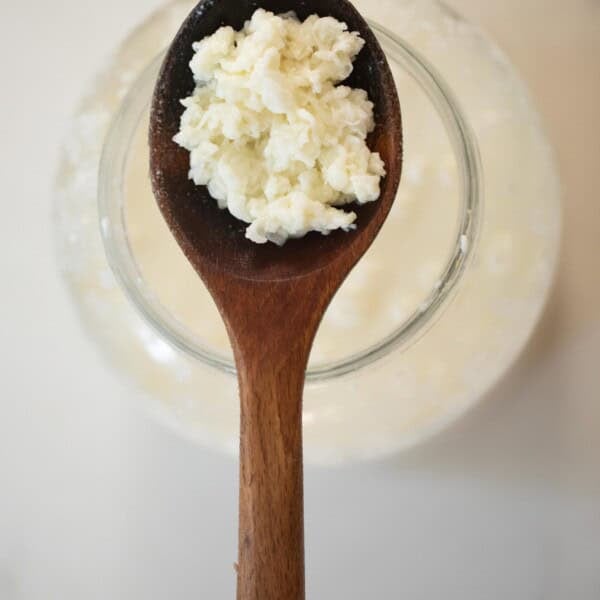






My store only had “low fat” plain yogurt..will this work also?
After 72 hours I opened for a drink and it was bubbly. I now store it in the fridge but the bubbles are gone when I get a drink. Should it be left on the counter to keep the carbonation?
It should stay carbonated if you kept it air tight in the fridge.
Rather than using whey, could one use Kombucha?
Whey works better since kombucha/a scoby works with tea. You could modify this recipe to make a fermented tea/lemonade with kombucha.
How long is whey good in the fridge for? I made yogurt one week ago the whey has been in there since.
Hi Lisa,
I have a white layer that has formed on my lemonade while fermenting it. When the 72 hours are up, how should I remove this white layer and the floating bits?
Thank!
You can use a cheese cloth to filter it!
I was wondering if I could use the whey from my fermented milk? I seem to let my milk grains sit to long and I get a lot of whey in it.
Yes you can.
I have a layer of white stuff on the bottom and if I bump the bottle some of that starts floating around and then re settles again is this normal? I read it could be yeast, but it’s a pretty thick layer. And can you open it up too many times in a day? I’m worried it will explode if I don’t let the games out enough! I have opened it morning and evening.
Yes, that is a variation of normal when fermenting. Yes, you can open it up too many times to where it doesn’t collect a natural carbonation. Once a day is probably fine.
Will a pickle pipe work for this recipe?
It should.
Hi Lisa,
Thank you for this fabulous recipe!
Can I do the same with grapes instead of lemon juice? If so, can I add the pulp?
When should I add it?
Yes, you can. Just follow this recipe and use the grapes/pulp.
Is there a store bought yogurt that you recommend most for this?
I prefer an unflavored organic yogurt.